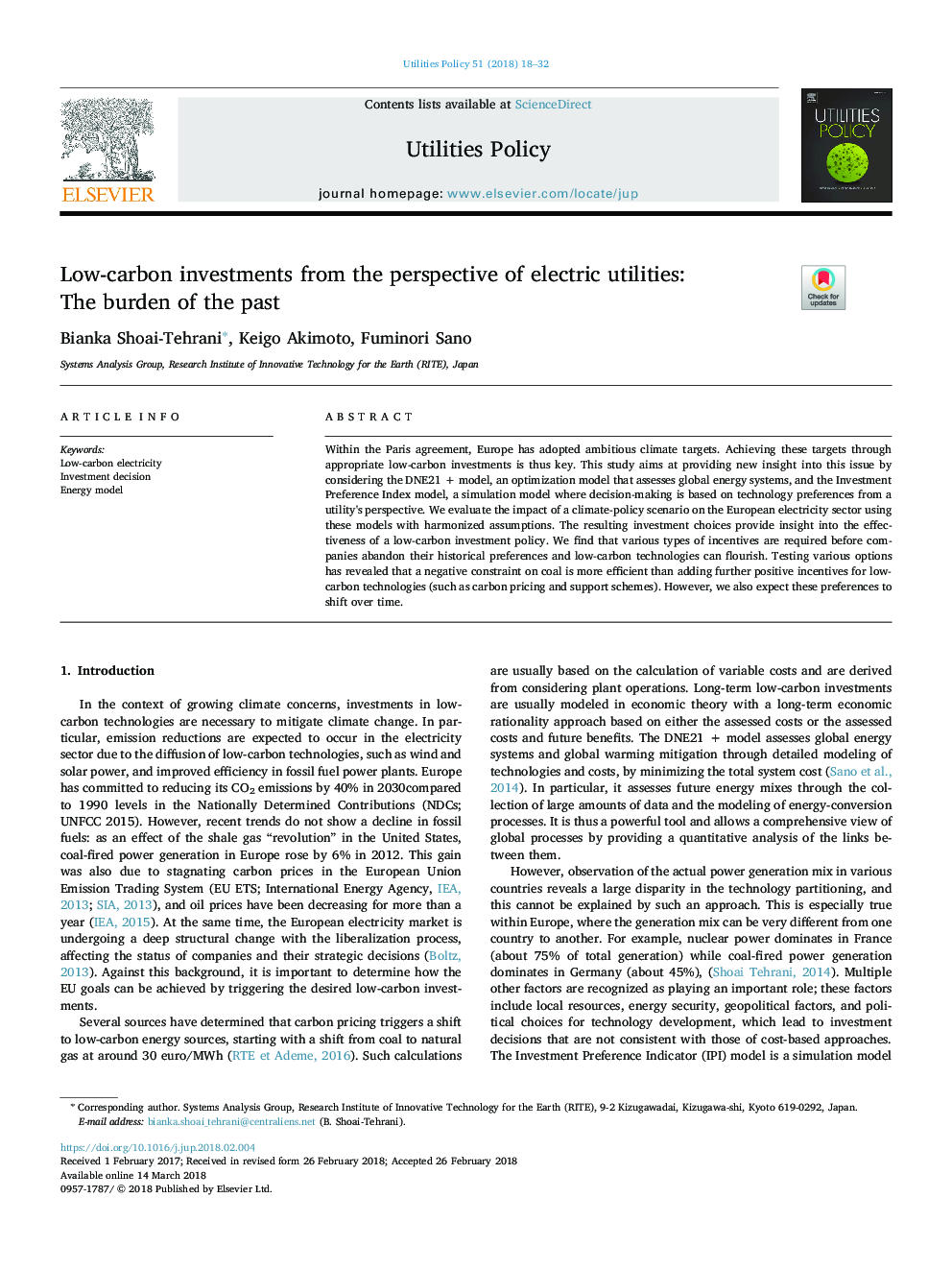| Article ID | Journal | Published Year | Pages | File Type |
|---|---|---|---|---|
| 7411233 | Utilities Policy | 2018 | 15 Pages |
Abstract
Within the Paris agreement, Europe has adopted ambitious climate targets. Achieving these targets through appropriate low-carbon investments is thus key. This study aims at providing new insight into this issue by considering the DNE21Â +Â model, an optimization model that assesses global energy systems, and the Investment Preference Index model, a simulation model where decision-making is based on technology preferences from a utility's perspective. We evaluate the impact of a climate-policy scenario on the European electricity sector using these models with harmonized assumptions. The resulting investment choices provide insight into the effectiveness of a low-carbon investment policy. We find that various types of incentives are required before companies abandon their historical preferences and low-carbon technologies can flourish. Testing various options has revealed that a negative constraint on coal is more efficient than adding further positive incentives for low-carbon technologies (such as carbon pricing and support schemes). However, we also expect these preferences to shift over time.
Related Topics
Physical Sciences and Engineering
Energy
Energy (General)
Authors
Bianka Shoai-Tehrani, Keigo Akimoto, Fuminori Sano,
